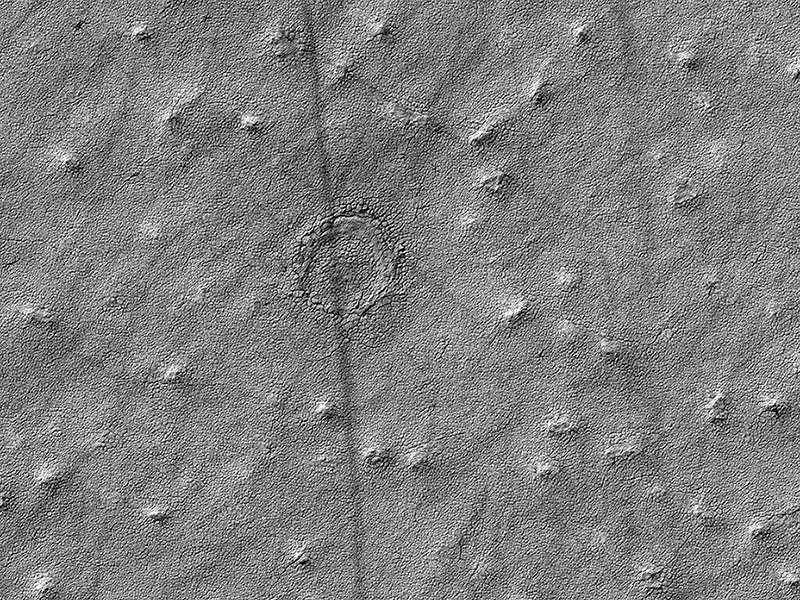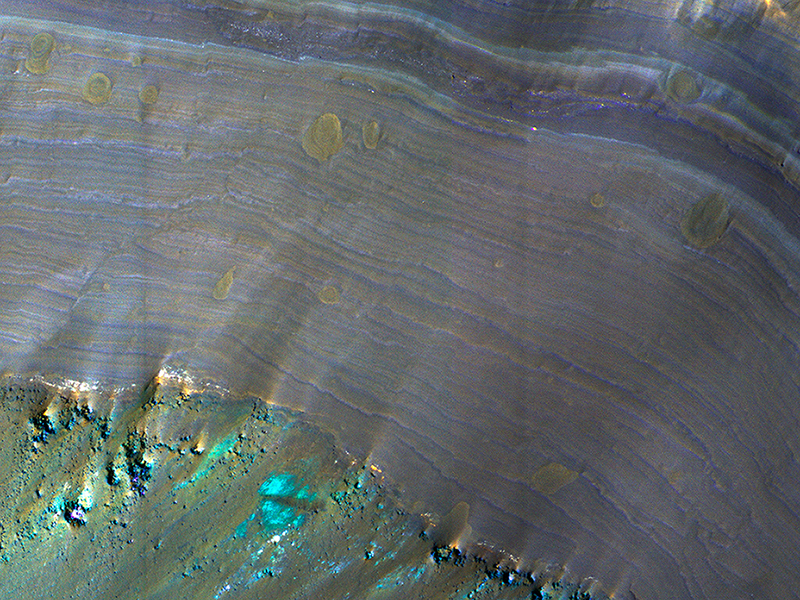Alfred McEwen wrote:Is That an Impact Crater? (ESP_049075_0995) (HiClip)
This image was acquired to take a closer look at a circular feature that might be an impact structure on the South Polar layered deposits.
Measuring the sizes and frequency of impact craters provides a constraint on the age of the landscape. However, craters in icy terrain are modified by processes that flatten and change them in such a manner that it is hard to say for sure if it had an impact origin.
Sharon Wilson wrote:A Sneak Peek into Saheki’s Secret Layers (ESP_049172_1585) (HiClip)
Saheki Crater is large, about 84 kilometers across, and located in the Southern highlands of Mars, to the north of Hellas Planitia. It’s filled with beautiful alluvial fans that formed when water (likely melting snow) carried fine material, such as sand, silt and mud, from the interior crater rim down to the bottom of the crater.
Two smaller craters impacted into the alluvial fan surface in Saheki, excavating holes that allow us to see what the fans look like beneath the surface. Exposed along the crater’s interior walls, we can see that the fan is made up of multiple individual layers (white and purple tones in the enhanced color image) that were deposited on the floor (the green and brown tones). The brown, circular shapes on the fan layers are small impact craters.
NB: North is down in the cutouts and wallpaper.
This is a stereo pair with ESP_049528_1585.
Alfred McEwen wrote:A New Impact Site in the Southern Middle Latitudes (ESP_049061_1370) (HiClip)
Over 500 new impact events have been detected from before-and-after images, mostly from MRO’s Context Camera, with a HiRISE followup. Those new craters that expose shallow ice are of special interest, especially at latitudes where not previously detected, to better map the ice distribution.
We hope to find ice at relatively low latitudes both for understanding recent climate change and as a resource for possible future humans on Mars. This new impact, which occurred between August and December 2016 (at 42.5 degree South latitude) would provide an important constraint if ice was detected.
Alas, the HiRISE color image does not indicate that ice is exposed. There is an elongated cluster of new craters (or just dark spots where the craters are too small to resolve), due to an oblique impact in which the bolide fragmented in the Martian atmosphere.
Alfred McEwen wrote:South Polar Spiral (ESP_049115_0955) (HiClip)
This hill in the South Polar layered deposits has influenced the erosion of the icy layers. The hill protects the layers from erosion, so the pattern of erosion to the sides of the hill forms a beautiful spiral pattern.
Credit: NASA/JPL-Caltech/University of Arizona
<< Previous HiRISE Update



